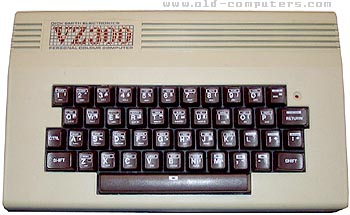
Despite what the cool kids are doing over on Hackaday Projects, the vast majority of vintage computers used some form of programmable logic for memory control, address decoding, and all that other stuff that can be done with just a few logic chips. It’s a great way to design a product for production, but what happens when the programmable chips go bad after 30 years?
[Clockmeister] got his hands on a Dick Smith VZ300 computer (a clone of the VTech Laser 310) with two broken 40-pin custom chips. After going through the schematics and theory of operation for this compy, he recreated the custom chips in 74 series logic.
The Dick Smith VZ300 is a fairly standard piece of equipment from 1985 – a Z80 CPU, 16k RAM, upgradable to 64k, a tape drive, and 32×16 character, 8 color display. Inside this computer are two 40-pin chips that are responsable for video buffering and VRAM control, keyboard and cassette I/O, video timing, and the monophonic speaker decoding. Both of these chips failed, and spares are unavailable, apart from scavenging them from another working unit.
After careful study, [Clockmeister] recreated the circuits inside these chip with 74 series logic chips. The new circuit was built on a board that plugs directly into the empty 40-pin sockets. Everything in this rehabbed computer works, so we’re just chalking this up as another reason why designing new retrocomputers with programmable logic is a dumb idea. Great for a product, but not for a one-off.










